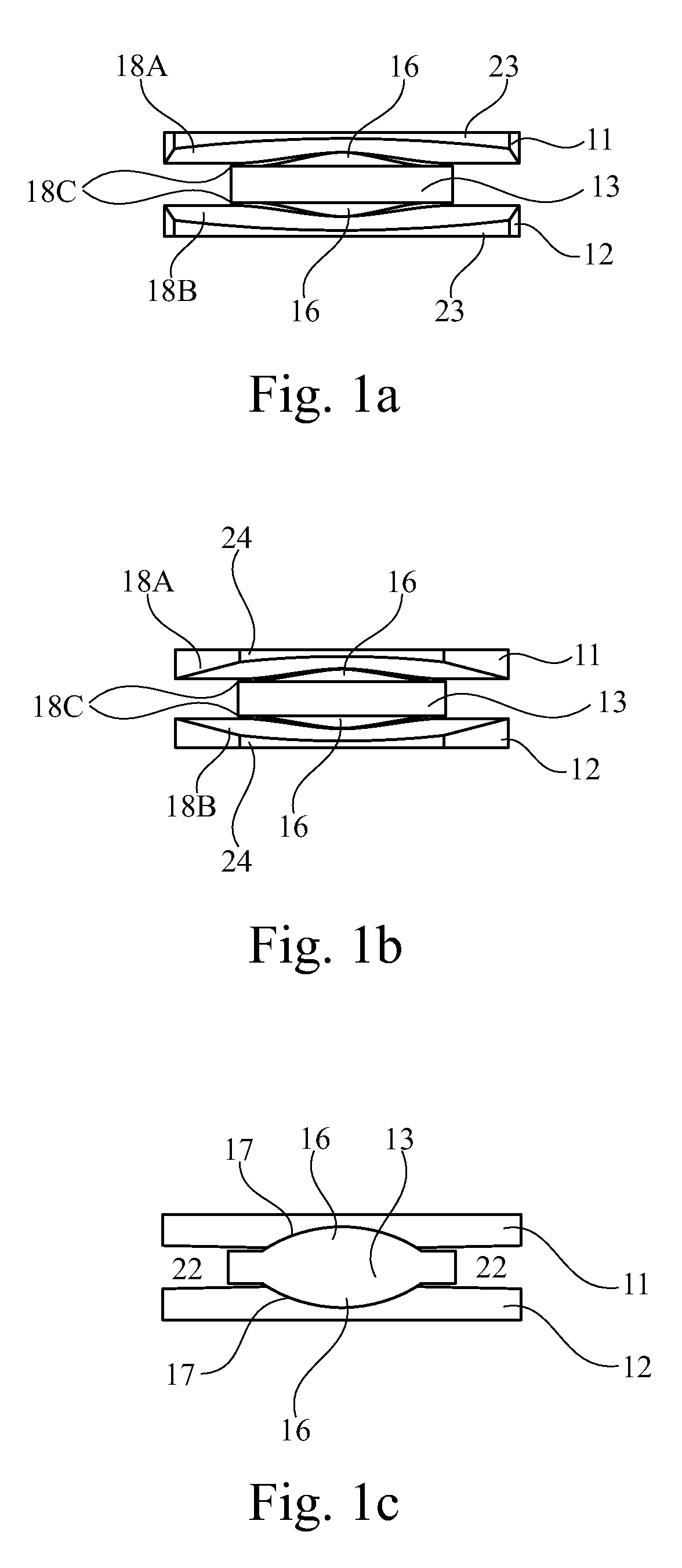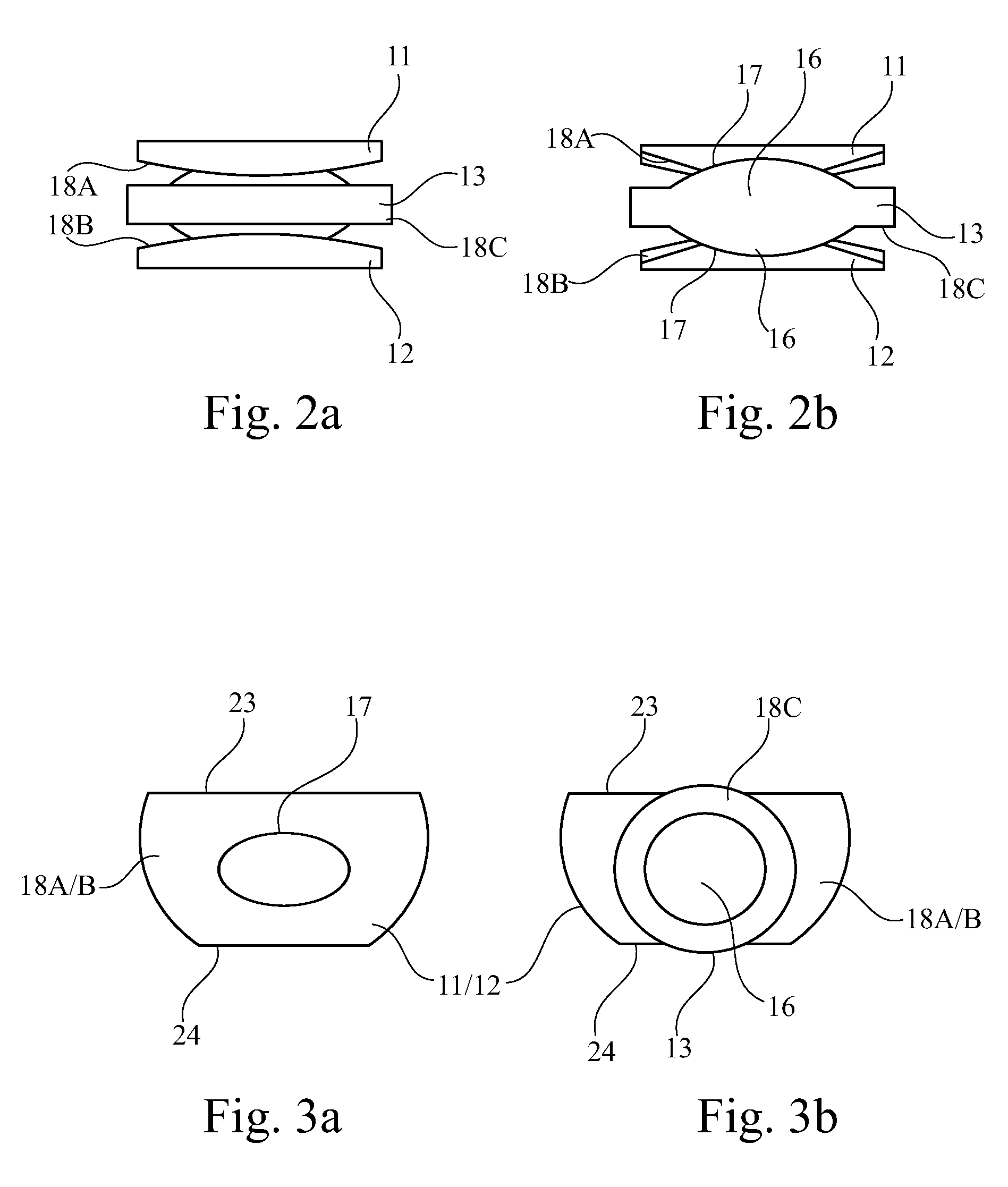Intervertebral disc prosthesis with a motion-adapted edge for the lumbar and cervical spine
a technology of intervertebral discs and prostheses, applied in the field of intervertebral disc prosthesis, can solve the problems of increasing surgical effort, irritating neural structures, and developing new materials with greater longevity, and achieve the effect of increasing the safeguard against dislocation
- Summary
- Abstract
- Description
- Claims
- Application Information
AI Technical Summary
Benefits of technology
Problems solved by technology
Method used
Image
Examples
Embodiment Construction
[0109]FIGS. 1a-c show different spatial frontal section views of a model of a functional three-part intervertebral disc prosthesis, as per invention, for the lumbar spine, with the middle sliding partner 13 having an edge 18. As per invention, however, other models of a three-part intervertebral disc prosthesis are also planned, where the middle sliding partner 13 is constructed without an edge 18.
[0110]FIG. 1a shows a frontal section view of the dorsal side 23 and FIG. 1b of the ventral side 24 of an intervertebral disc prosthesis, as per invention. In an intervertebral disc prosthesis, as per invention, intended for the implantation into the lumbar spine, the ventral side 24 (FIG. 1b) is narrower than the dorsal side 23 (FIG. 1a), with the result of the ventrally tapering off shape of the upper and lower sliding partners 11, 12. For an implantation of the intervertebral disc into the cervical spine, the external circumferences of the upper and lower sliding partners 11, 12 tapers ...
PUM
 Login to View More
Login to View More Abstract
Description
Claims
Application Information
 Login to View More
Login to View More - R&D
- Intellectual Property
- Life Sciences
- Materials
- Tech Scout
- Unparalleled Data Quality
- Higher Quality Content
- 60% Fewer Hallucinations
Browse by: Latest US Patents, China's latest patents, Technical Efficacy Thesaurus, Application Domain, Technology Topic, Popular Technical Reports.
© 2025 PatSnap. All rights reserved.Legal|Privacy policy|Modern Slavery Act Transparency Statement|Sitemap|About US| Contact US: help@patsnap.com



